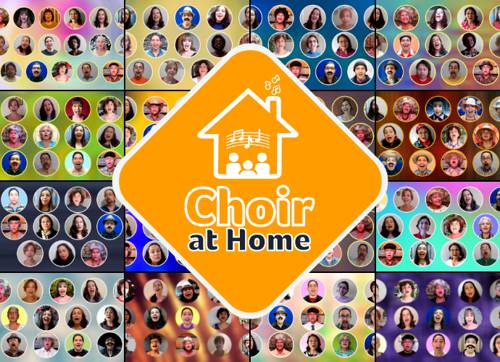
FAQ About The Influence of Virtual Choirs in Modern Music

What is a virtual choir?
A virtual choir is a gathering of singers who record their individual performances remotely, which are later compiled into a single cohesive choral piece using digital audio and video editing tools. This concept has allowed individuals from all over the world to collaborate and create music together without being physically present in the same location.

How did virtual choirs gain popularity?
Virtual choirs gained significant popularity during the COVID-19 pandemic, when in-person gatherings were restricted. Singers and choirmasters sought alternative ways to continue performing and sharing music, leading to increased use of online platforms to create virtual choir performances.

What technology is used to create virtual choirs?
Virtual choirs rely on a variety of technologies, including digital audio workstations for sound editing, video editing software for visual compilation, and online platforms for file sharing and collaboration. Participants usually record their parts using microphones and cameras, then upload their files for assembly.

Who pioneered the concept of the virtual choir?
Eric Whitacre, a Grammy Award-winning composer and conductor, is credited with pioneering the concept of the virtual choir. He created the first notable virtual choir in 2009 with the piece 'Lux Aurumque', bringing together 185 singers from 12 different countries.

What impact do virtual choirs have on traditional choir performances?
Virtual choirs have expanded the possibilities for collaboration beyond geographical limitations, allowing for diverse and inclusive performances. However, they differ from traditional choirs because they lack the immediate feedback and emotional connection present in live group singing. While virtual choirs complement traditional ones, they do not replace the unique experience of live choral music.

Can anyone join a virtual choir?
Generally, virtual choirs are open to singers of all levels, from amateur to professional, making it an accessible platform for anyone who wishes to participate. Some virtual choirs may have specific requirements or auditions, depending on the level of the choir and the project.

How do singers participate in a virtual choir?
Participants usually receive sheet music and a guide track to follow. Singers then record their voice part, often using a computer or smartphone. These recordings are submitted to the choir director or production team who assembles them into a final performance video.

What are the benefits of virtual choirs?
Virtual choirs provide an opportunity for global collaboration, allowing individuals from different cultures and backgrounds to connect through music. They also offer greater flexibility in participation, enabling singers to join from the comfort of their homes. Furthermore, they serve as a valuable tool for educational purposes, providing an experience of ensemble singing beyond geographical constraints.

Are there any challenges associated with virtual choirs?
Some challenges of virtual choirs include the lack of real-time interaction and feedback, which can impact the collaborative aspect of music-making. Technical issues, such as varying recording equipment and internet connectivity, also pose difficulties, as achieving a balanced and professional sound takes significant time and expertise in editing.

How do virtual choirs handle varying audio quality from participants?
To address varying audio quality, virtual choir organizers often provide detailed instructions on recording settings and techniques to participants. The post-production team then uses audio editing software to balance and enhance the quality of each submission, creating a uniform sound for the final performance.

What role does a conductor play in a virtual choir?
In a virtual choir, the conductor typically provides a guide track with visual cues and tempos to help singers perform in time and with consistent interpretation. While the conductor may not lead a live performance, their role in preparing materials and guiding participants is crucial to the success of the virtual ensemble.

How has the virtual choir format impacted music education?
Virtual choirs have significantly impacted music education by allowing students to experience ensemble singing in a remote or hybrid setting. They provide an opportunity to practice independent musicianship, improve technological skills, and connect with peers from diverse locations, enriching the educational experience.

Are virtual choirs a temporary trend or a new standard in choral music?
While initially driven by necessity during the COVID-19 pandemic, virtual choirs have established themselves as a popular medium for music-making due to their accessibility and inclusivity. They are likely to remain a valuable tool for special projects and global collaborations, even as traditional choirs resume regular activities.

What types of music are performed by virtual choirs?
Virtual choirs perform a wide range of music, from classical and contemporary choral pieces to pop songs and original compositions. The flexibility of the format allows for diverse repertoire choices, catering to the interests and abilities of participating singers.

Do virtual choirs affect the emotional impact of choral music?
While virtual choirs offer unique opportunities for global connection, the emotional impact experienced during a live choir performance, with its immediate feedback and shared space, can be different. However, the collaborative essence and shared purpose in virtual choir projects can still evoke strong emotions among participants and audiences alike.

How does one start a virtual choir?
Starting a virtual choir involves assembling a group of interested singers, choosing a suitable piece of music, and providing participants with the necessary materials to record their parts. Technology for recording, editing, and compiling videos is essential. Lastly, clear communication and guidance help ensure a successful outcome.

What is the future of virtual choirs in the music industry?
The future of virtual choirs looks promising as they continue to evolve with technological advancements. They are expected to complement traditional choirs, providing additional platforms for collaboration and a means to reach wider audiences and engage with artists globally.

Can virtual choirs replace live performances?
Virtual choirs cannot fully replace the experience of live performances, as the immediacy and interactivity of live music are integral to its emotional power. However, they offer a valuable alternative and a means to connect singers and audiences who might not otherwise have the opportunity to engage in live choral experiences.

What is the role of social media in promoting virtual choirs?
Social media plays a significant role in promoting virtual choirs by providing a platform to share performances, connect with participants and audiences, and reach a broader audience. It helps in raising awareness and building communities around virtual choir projects.

How do virtual choirs contribute to cultural exchange?
Virtual choirs facilitate cultural exchange by bringing together singers from diverse cultural backgrounds to collaborate on musical projects. This exchange enriches participants' understanding and appreciation of different cultures through the universal language of music.
